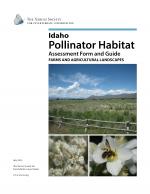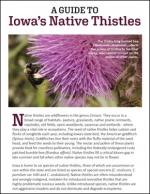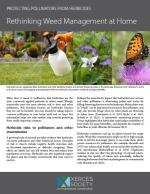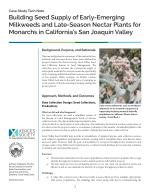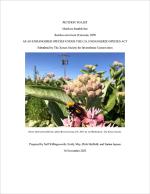As a science-based organization, the Xerces Society produces dozens of publications annually, all of which employ the best available research to guide effective conservation efforts. Our publications range from guidelines for land managers, to brochures offering overviews of key concepts related to invertebrate conservation, from books about supporting pollinators in farmland, to region-specific plant lists. We hope that whatever you are seeking—whether it's guidance on making a home or community garden pollinator-friendly, advice on developing a local pesticide reduction strategy, or detailed information on restoring habitat—you will find it here!
Find Publications
Use the search functions to sort by publication type (books, guidelines, fact sheets, etc.), location, and/or subject (agriculture, gardens, pollinators, pesticides, etc.).
Pollinator Habitat Assessment Guide
This pollinator habitat assessment guide is designed for a single site on a farm or agricultural landscape in Pennsylvania.
Pollinator Habitat Assessment Guide
This pollinator habitat assessment guide is designed for a single site on a farm or agricultural landscape in Idaho.
Pollinator Habitat Assessment Guide
This pollinator habitat assessment guide is designed for natural areas and rangelands.
Pollinator Habitat Assessment Guide
This pollinator habitat assessment guide is designed for a single site on a farm or agricultural landscape.
The Florida Museum of Natural History, in collaboration with the Xerces Society, the Butterfly Conservation Initiative, and the U.S. Forest Service, has produced three educational brochures that feature information about monarchs and milkweeds. One side of the brochure describes the plight of the monarch and encourages the planting of regionally appropriate milkweed species, while the second side showcases larvae of other butterfly species and their associated host plants.
The Florida Museum of Natural History, in collaboration with the Xerces Society, the Butterfly Conservation Initiative, and the U.S. Forest Service, has produced three educational brochures that feature information about monarchs and milkweeds. One side of the brochure describes the plight of the monarch and encourages the planting of regionally appropriate milkweed species, while the second side showcases larvae of other butterfly species and their associated host plants.
The Florida Museum of Natural History, in collaboration with the Xerces Society, the Butterfly Conservation Initiative, and the U.S. Forest Service, has produced three educational brochures that feature information about monarchs and milkweeds. One side of the brochure describes the plight of the monarch and encourages the planting of regionally appropriate milkweed species, while the second side showcases larvae of other butterfly species and their associated host plants.
Freshwater mussels are rarely recognized for the important role they play in supporting river, stream, and lake ecosystems. Salmon and other native fish are among the myriad species that benefit from the services mussels provide. Sadly, freshwater mussels are sensitive to changes in their environment and as a group they are among the most imperiled animals in the world.
A Guide to Saving America’s Butterfly
This brochure contains information about how to enhance any landscape to help meet the seasonal needs of monarchs.
Native thistles are wildflowers within the genus Cirsium. They occur in a broad range of habitats—pastures, grasslands, prairie remnants, roadsides, idle fields, open woodlands, savannas and wetlands—where they play a vital role in ecosystems. This brochure describes native and non-native thistles and provides guidance on recognizing the different species and their distinct features.

